
6 Must-See Historic Forts In Louisiana
Louisiana lies along the Gulf Coast and at the mouth of the Mississippi River. Its strategic location meant it was the ideal spot for military engineering from the colonial era through the Civil War. The waterways facilitated trade and transport, while the state maintained strategic control over its interior. As a result, French and Spanish colonists, the early United States, and the Confederacy worked to fortify the region via several forts.
What remains of wartime in the state includes these historic forts (or what is left of them) that are open to visitors who want to learn more about their role in protecting Louisiana.
Fort St. Jean Baptiste State Historic Site
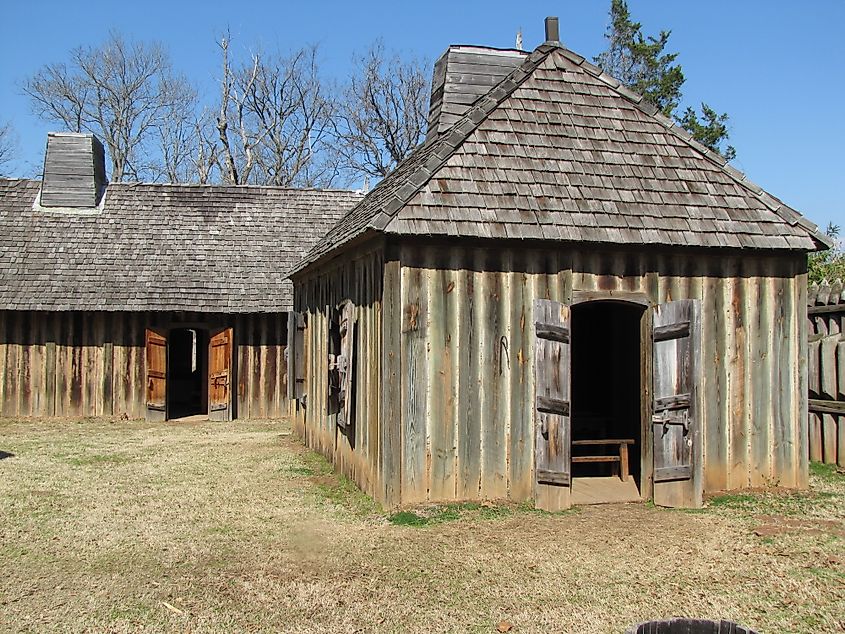
The early French fort at the Fort St. Jean Baptiste Historic Site in Natchitoches is not the original. It is a replicated fort based on the one that was built according to 1716 blueprints by Sieur Du Tisné. The original fort was known as Fort Saint Jean Baptiste des Natchitoches, before it was shortened to Fort Saint Jean Baptiste in the 1970s.
The first site was established in 1716 by a group of colonial troops tasked with creating an outpost to prevent Spanish forces from Texas from crossing the border of French Louisiana. It replaced the two huts constructed according to the instructions of Louis Antoine Juchereau de St. Denis in 1714.
The replica sits a few hundred yards from the first fort site, on the west bank of the Cane River Lake. Work on the replica began in 1979 and required 2,000 pine logs and 250,000 board feet (BF) of treated lumber.
Today, visitors can explore the site where the replica fort stands (for a small fee). The site hosts several programs and events throughout the year to highlight the lifestyle of those who came before. These events may include crochet sessions and candle-making events.
Those who visit during the fall can also indulge in Natchitoches’ excellent meat pies during the Natchitoches Meat Pie Festival. The Natchitoches Christmas Festival is another event to look forward to when visiting the historic fort site in December.
Fort Jackson
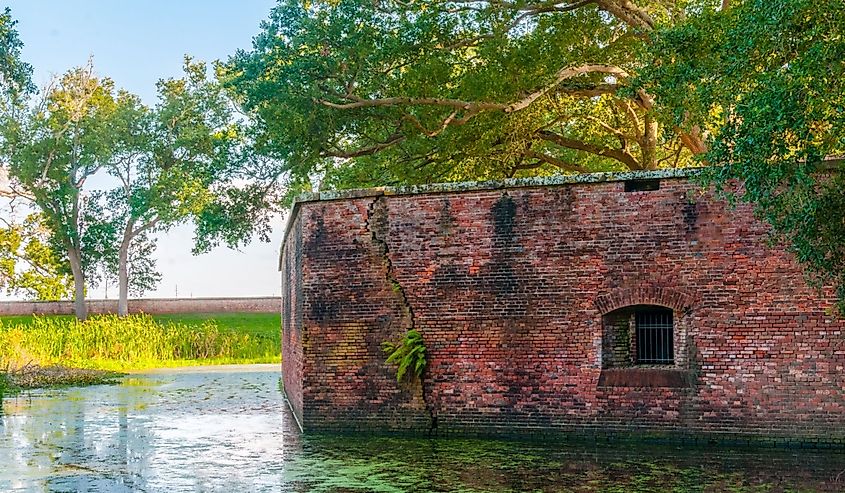
Fort Jackson, a historic masonry fort, is situated 40 miles upriver from the Mississippi River Mouth in Plaquemines Parish. The fort was built between 1822 and 1832 to improve the coastal defense of New Orleans. It was also directly involved in battle during the American Civil War.
Confederate troops took control of Fort Jackson and Fort St. Philip, which sit on the opposite side of the Mississippi. Admiral David Farragut commanded a Union fleet in April 1862, sailing up the river and attacking both forts.
The Confederate troops used a chain, strung along barges between the two forts, to try to slow down the fleet. However, the intense Union attack resulted in the barges being set on fire, and the chains disappeared into the water. The Union kept attacking, striking the forts with thousands of cannonballs before sailing past them and capturing New Orleans.
Many years later, Fort Jackson faced a different battle as it tried to stand against Hurricanes Betsy, Camille, Katrina, and Rita. The latter, in particular, caused significant damage to the fort, so visitors are not always permitted to view the interior. When conditions allow, the interior is opened to the public for a limited time.
The park surrounding the fort stays open, allowing visitors to view the exterior. There is also the Fort Jackson Museum to explore, located a mile away.
Fort St. Philip
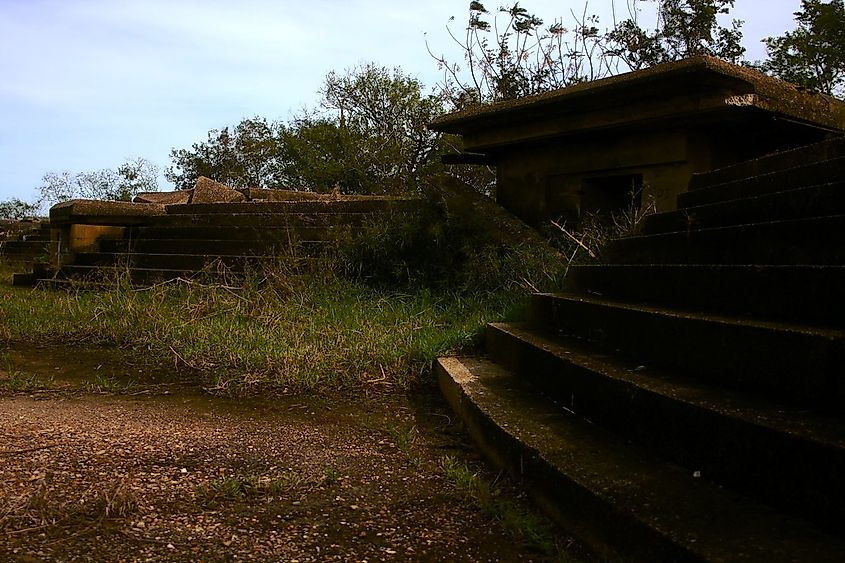
It is also possible to visit Fort St. Philip on the east bank of the Mississippi River. The fort consists of a group of structures that stand in the place of the first fort, Fort San Felipe, which was constructed in the 18th century.
Fort St. Philip’s garrison defended the side of the river that led to New Orleans. Naval forces from Britain attacked the fort but were unable to break through its defenses.
Along with Fort Jackson, Fort St. Philip served as coastal defense, especially during the twelve-day siege in April 1862 by Union Forces.
In a notable about-turn, the fort was the site of a tanning factory during the 1930s. Then, during the Civil Rights Movement, Leander Perez threatened to jail opponents at the fort and even had barbed wire installed at the site.
From the late 70s to the late 80s, the site housed a spiritual community known as Vella-Ashby. In 2025, the fort site is privately owned and still sports heavy damage from Hurricanes Katrina and Rita. Only the original brick fort and concrete structures that date to the Spanish-American War remain.
To reach the site, visitors must make special arrangements, and they can only travel via helicopter or boat. This is only allowed during specific times of the year, considering the area is also subject to flooding due to the erosion of the levee.
Forts Randolph and Buhlow State Historic Site

Forts Randolph and Buhlow State Historic Site is located in Pineville and includes what is left of Bailey’s Dam. The dam is famous for allowing the Union fleet to escape during the Union retreat under the command of Admiral David Porter during the Battle of Mansfield.
After the battle, which saw the Union’s advance to the west abruptly halted, the two forts were established on the Red River at Alexandria. They were built by Confederates who sought to prevent further Union attacks in Northwest Louisiana. The forts were completed in March 1865, with plans for a third, bigger fort never realized.
Together, the Randolph and Buhlow forts were fortified with more than 800 soldiers, as well as cannons. Fortunately, the war ended just two months later.
In 2025, visitors can explore the forts and the area surrounding them via a boardwalk that extends near the banks of the Red River. The boardwalk includes an overlook near the remains of Bailey’s Dam. Visitors can opt for a guided tour or a trip to the visitor center, which features an exhibit on the Red River Campaign. Keep in mind that there is a small entrance fee to pay upon entrance.
Fort Livingston
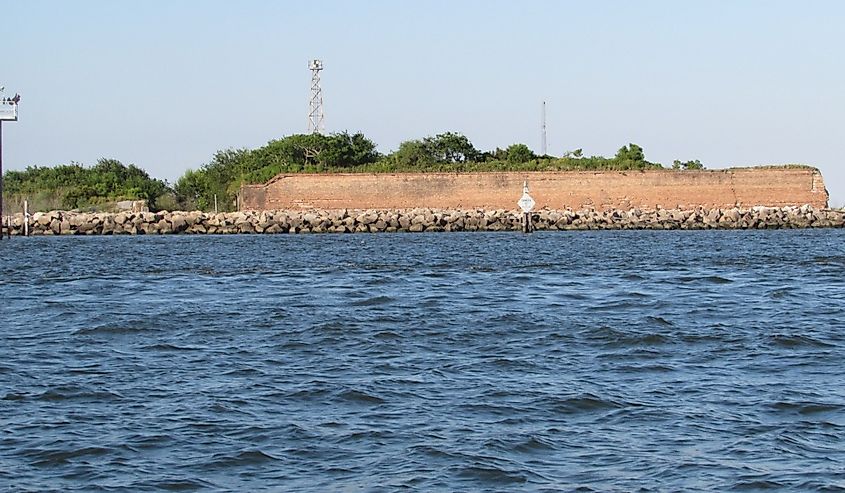
During the 19th century, Fort Livingston provided coastal defense on Grand Terre Island in Jefferson Parish. The fort was named after Edward Livingston and listed on the National Register of Historic Places in 1974.
It is the only fort on the Gulf of Mexico (Gulf of America) and one of the largest coastal forts throughout Louisiana. It is rumored that Pirate Jean Lafitte’s operations were interrupted, and the pirates were driven off Grand Terre Island in 1814 when plans for a fort first came to light.
However, the fort was only built in 1841, and the first Barataria Bay Lighthouse was built near it in 1856. The fort, isolated on the barrier island, was never involved in battle. By 1866, it was placed in caretaker status, and the guns were removed from it in 1872. After sustaining heavy hurricane damage in 1893, the fort was abandoned.
Louisiana gained control of the island and its fort in 1923; today, the site is only accessible by boat. Boats typically launch from Grand Isle or other nearby locations. It is also possible to kayak to the location, but visitors are advised to note the increased boat traffic between east Grand Isle and west Grand Terre. Visitors can kayak to the northwest point of the western region of the island, where the rock jetty has an opening.
Port Hudson State Historic Site
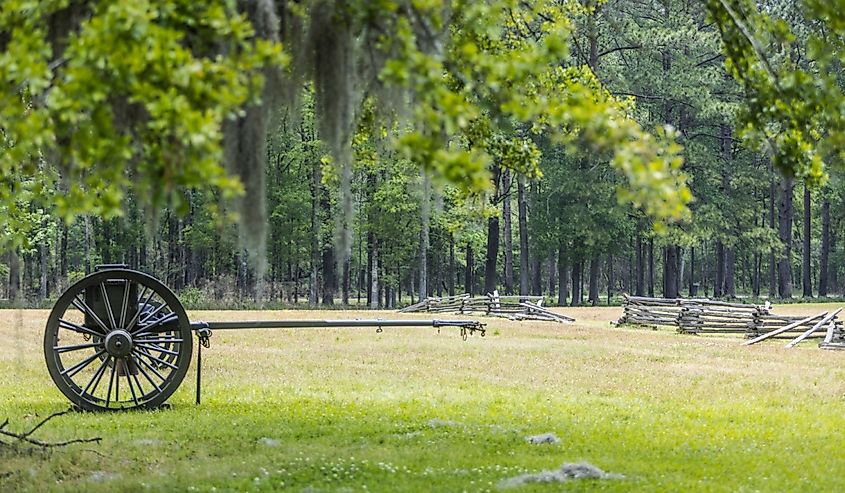
Port Hudson State Historic Site is easily accessible and was once an active Confederate fort during the Civil War. In 1863, the war had already been raging for two years, and Louisiana was the site of numerous battles.
At the time, Port Hudson was an unincorporated community. The Port Hudson site would become Port Hudson State Historic Site because of its patch of high ground within sight of the Mississippi. By the time the Union army travelled up the river, the Confederates had received reinforcements from Vicksburg. At the Port Hudson site, a siege ensued that lasted from May 23 to July 9, 1863, the longest siege of the Civil War.
After more than 12,000 deaths, the Confederates surrendered, and the Union forces took control of the river and its tributaries.
Visitors who explore the site today can take guided tours of the ridges and artillery displays. They can also stay for the annual re-enactment of the fierce battle (during the spring). There is an on-site museum that goes into detail about the Siege of Port Hudson, and visitors can also stroll along the trails and enjoy the views from the overlooks throughout the site. A small entrance fee is applicable.
Louisiana’s forts, whether strong in stature or crumbling, are more than just monuments. They highlight the state’s history of strategic thinking, battle for colonial control, and military innovation dictated by geography. Visiting these forts in 2025 provides the opportunity to walk along historic walls that helped engineer history.











